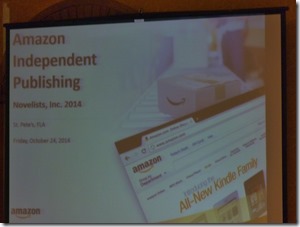Once you get the rights back to your earlier titles, what do you do with them? Try to resell these books to a new publisher? Put them online as ebooks for sale? Offer them in a new trade paperback print edition? Go through an intermediary such as Draft2Digital or publish them yourself directly to vendors? And should you revise and update the stories first?
When I got my rights back from Kensington for my earlier Bad Hair Day Mysteries, I decided to tighten the writing, update the technology, and add back materials to the books. Now was my chance to hire a cover artist and get the design I’d always envisioned.
Here are four versions of Permed to Death, the first book in my mystery series. From the left to right: Kensington, Ereads, Open Road Media, and my new AUTHOR’S EDITION (Cover design by Patty G. Henderson at Boulevard Photografica).
So what should you do first if you’re interested in reviving your old titles?
Obtain a File
First you’ll need a digital copy of your book in one entire file. I wrote my early books in the days when we copied the manuscript and snail mailed it to our publisher. Each file was a separate chapter. I didn’t have a single intact file for the book. Nor did I have the edits that were done by my publishing house. In other words, my original files didn’t match the finished product.
What to do? These books came out in hardcover and then in mass market paperback. I decided to have the paperbacks scanned in since they held the most recent edition.
The Scanning Process
If you’re lucky enough to find a digital copy of your book online, you could buy it, download the file and work from there. You can use the free Calibre program to convert between formats. Otherwise, choose a scanning company. I used Blue Leaf. You’ll have to sacrifice the book you send because it’ll be destroyed in the process.
Once you get the files back from the scanner, make sure you have an editable Word document, if this is the software you use. Then you have to review the text WORD FOR WORD to look for scanning errors. You may see a strange squiggle mark. Note this excerpt from Died Blonde:
Shutting off the blow-dryer, Marla plunked it on the counter. “Did you see how Claudia looked away when I mentioned a power blackout? She knew about it Probably Carolyn went to the meter room to turn off my electricity.”
You have to turn on the paragraph reveal mark in Word to see the irregular mark in “probably.” It looks like a hyphen with a bar hanging off the end. You’ll have to go through the entire document looking for this weird symbol. It’s intense, eye-straining work.
Notice the period is missing after She knew about it. Missing punctuation is another problem. Or quotes pointing the wrong way, use of an apostrophe instead of a quote mark, or an extra space after a hyphen.
In revising and updating your work, one of the things to look for are “ing” sentences like that first one. More about that when we talk about revisions.
Here’s another example with a misspelling for Sun-Sentinel. That weird mark is also present in “released.”
“The medical examiner’s report hasn’t been released yet, but the SunSenlinel reporter is saying Carolyn died under mysterious circumstances.”
Here’s a guide on what to look for after having your book scanned:
· Weird symbols when you turn on the paragraph symbol in Word
· Missing or wrong punctuation
· A number “1” instead of an “I”
· Misinterpretations, such as comer instead of corner. Watch for words like this with “rn” coming out as an “m” instead.
· Misspelled words such as for away instead of far away; “die” instead of “the”
· The letter “d” instead of “tl”: Words like abrupdy. Or see this example:
Marla setded a cape around her mother’s slim shoulders.
· Check the spacing for italics that it’s normal and not expanded or condensed (Highlight the word, hit Font, then Advanced).
· Make sure italics don’t come out as bold.
· Replace two spaces between sentences with one space if necessary.
· Format chapter headings properly with a page break and remove any section breaks.
· Look for run-on paragraphs or paragraph marks too soon that split a sentence onto the next line. Example:
“Carolyn promised Linda she would inherit her collectibles, but we couldn’t find any items of value.” “Jewelry? If a collection exists, it makes sense
they were gifts from her private benefactor. I don’t see how Carolyn could afford anything else. Did she have a safety deposit box?”
This should read:
“Carolyn promised Linda she would inherit her collectibles, but we couldn’t find any items of value.”
“Jewelry? If a collection exists, it makes sense they were gifts from her private benefactor. I don’t see how Carolyn could afford anything else. Did she have a safety deposit box?”
You need an eagle eye and several read-throughs to catch all these errors. Regardless of which route to publication you take, you’ll want to present a professional product. So gear up to begin the next stage, which is revisions and/or formatting.(Coming Next!)
LAST DAY FOR CONTEST ENTRIES!!!
Enter to win a $25 Amazon/BN gift card from Booklover’s Bench, where readers are winners. http://bookloversbench.com/contest/
Enter to win 35 cozy mysteries and a Kindle Fire in Storytellers Unlimited Spring into Mystery Giveaway. My contribution is an ebook copy of Permed to Death. http://bit.ly/CozySpring





